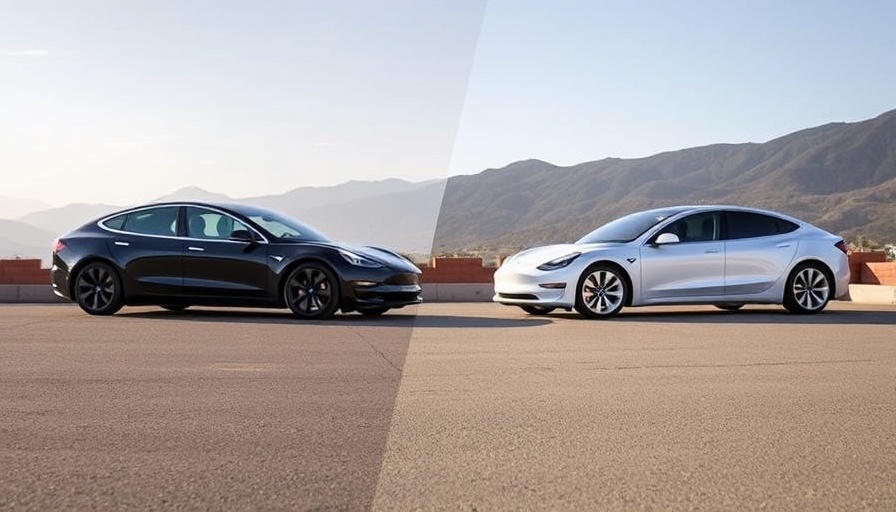
Why Are Cheaper Model 3 and Model Y Surprising Buyers?
The recent unveiling of Tesla's new "Standard" versions of the Model 3 and Model Y has sparked widespread discussions, filled with both hope and disappointment. While these models present an opportunity for entry-level Tesla ownership, they have led to mixed reactions among consumers eager for a more affordable electric vehicle. Priced at $37,000 and $40,000 respectively, they have attracted attention, but critics suggest they still fall short of market expectations amidst rising prices.
A Remarkable Increase in EV Range
With a notable increase, the new Model 3 boasts an impressive EPA-rated range of 321 miles, compared to the 240 miles offered by the 2019 Standard Range Plus model. This enhancement is a testament to Tesla's ongoing commitment to improving battery technology. Despite inflation impacting the prices of many goods, battery costs have been steadily decreasing, allowing for longer ranges in newer models. This improvement in performance stands out as a significant advantage, appealing particularly to environmentally-conscious buyers.
Price Hikes and Market Expectations
Conversely, the anticipated drop in price that many fans had hoped for hasn't materialized. Initially, Tesla aimed to introduce a much more affordable model priced around $25,000, but that project has been dropped. The new Model 3 and Model Y, while cheaper than their "Premium" counterparts, are actually more costly than the previous week’s pricing due to the expiration of the US federal EV tax credit. This has raised questions around affordability in the EV market, which many consumers hoped to enter with a lower-priced option. Analysts indicate that without a substantial price reduction, these new models may not attract a broader market segment.
Impact of Recent Changes on Consumer Perception
Critics highlight that the release of these vehicles is not necessarily a breakthrough for Tesla as a brand, marking perhaps a regression in its innovation strategy. Joseph Yoon, a consumer analyst, emphasizes that instead of significantly enhancing features, Tesla's strategy appears to be cutting costs at the expense of quality. The stripped-down versions lack several features that were once standard, providing a sense of unease around Tesla's commitment to quality, especially as it attempts to penetrate new areas of the EV market.
Comparative Analysis with Other EV Options
Today's average EV transaction price exceeds $57,000, placing Tesla in a spotlight shared by few others, yet still leaving many consumers unsatisfied. Competing models like the new $30,000 Nissan LEAF or the anticipated Chevrolet Bolt EV, starting under that price point, demonstrate that Tesla's pricing strategy may not resonate with new buyers looking for affordability combined with modern features. The challenge remains: whether Tesla can sustain loyal customers while also expanding its reach into new demographics.
Final Thoughts on Tesla's Future Offerings
As Tesla navigates through these strategic changes, it faces the critical task of reassessing how best to meet the demands of aspiring EV buyers. The buzz created by this announcement illustrates the strong desire for affordability in the EV landscape, though the reality may not yet align with consumer expectations. Investors and fans alike are left to ponder the implications of the new Standard models, as they weigh the pros and cons of staying loyal to the Tesla brand. Only time will determine whether these changes will provide the desired uplift in sales or if they will drive customers towards competing brands.
 Add Row
Add Row  Add
Add 




Write A Comment